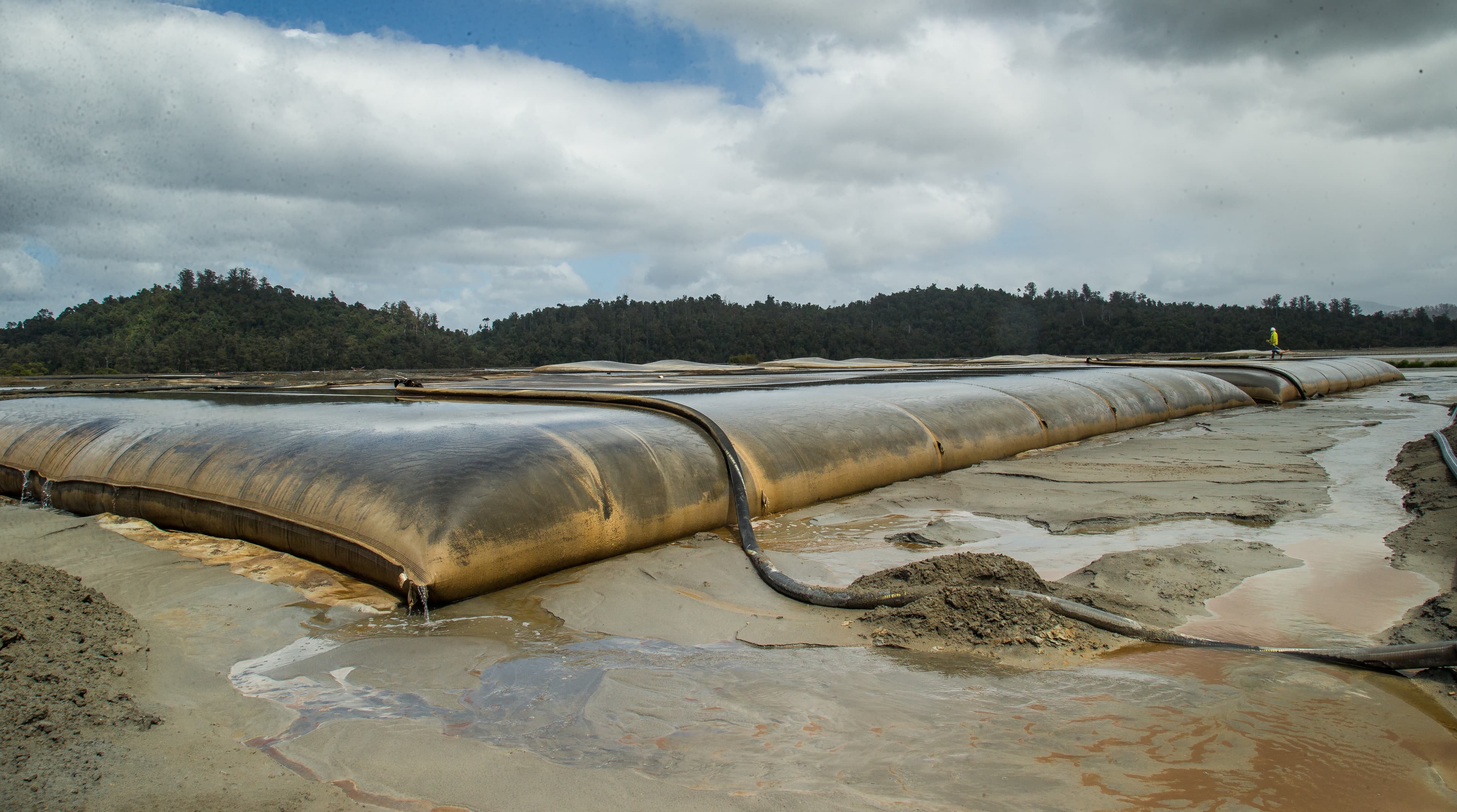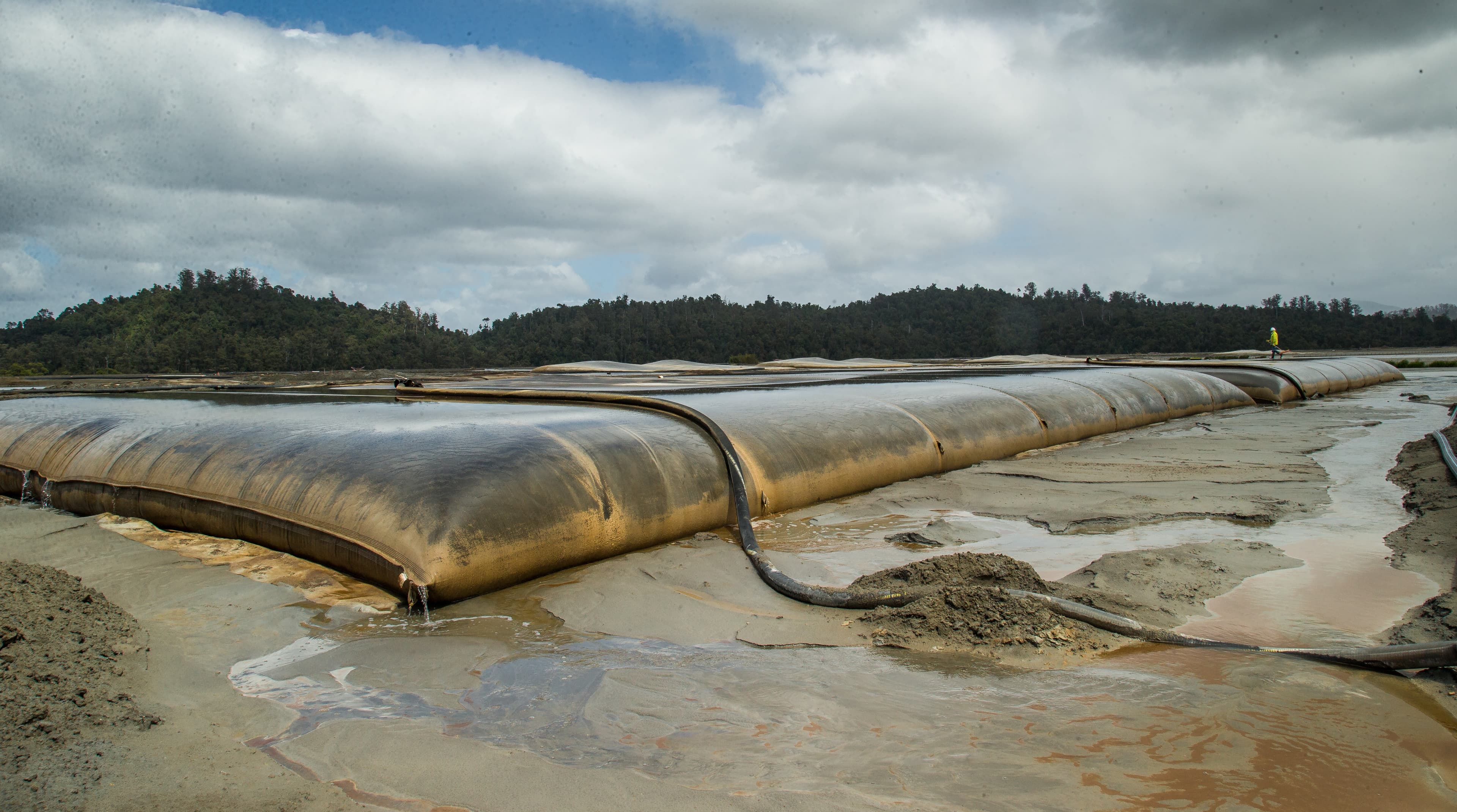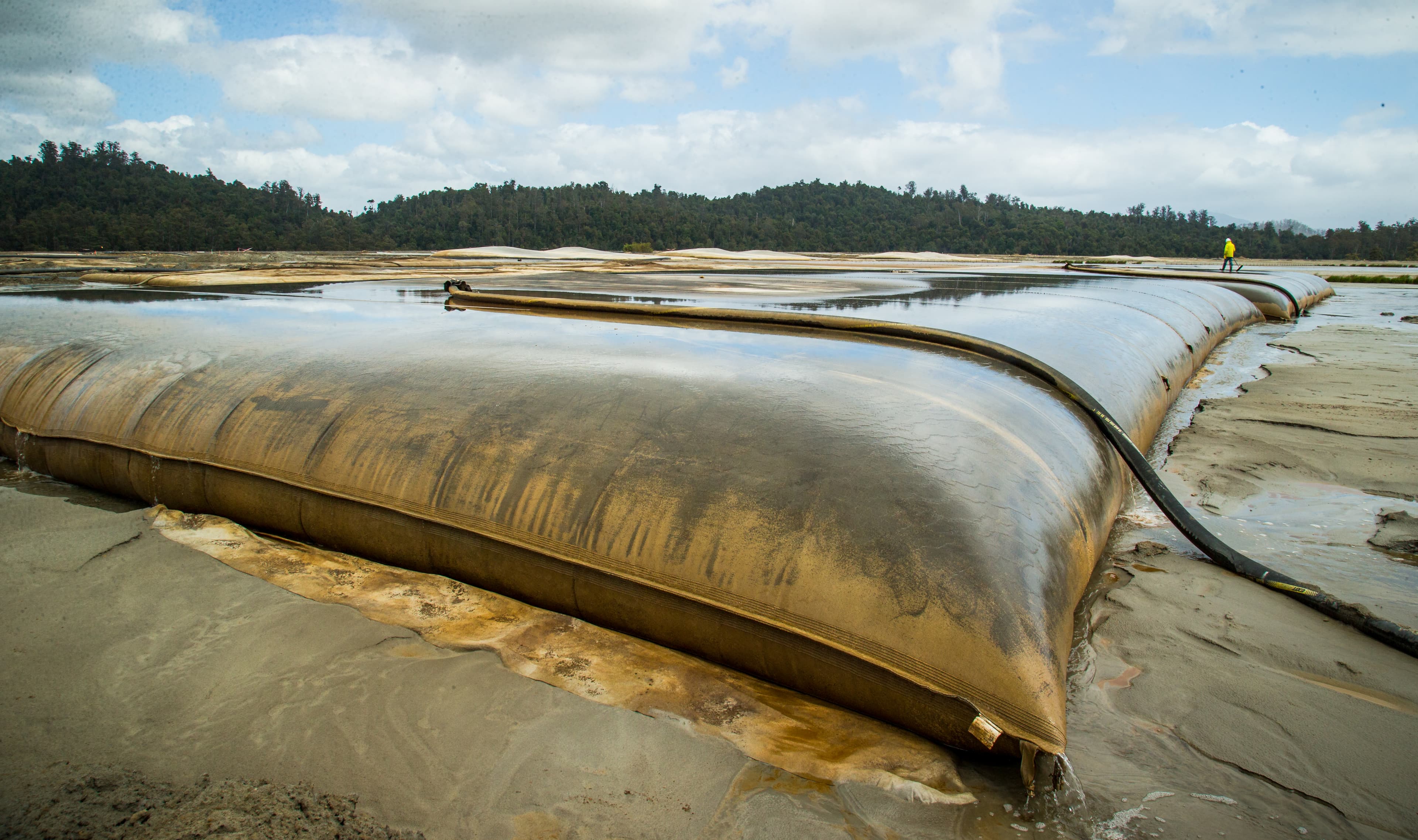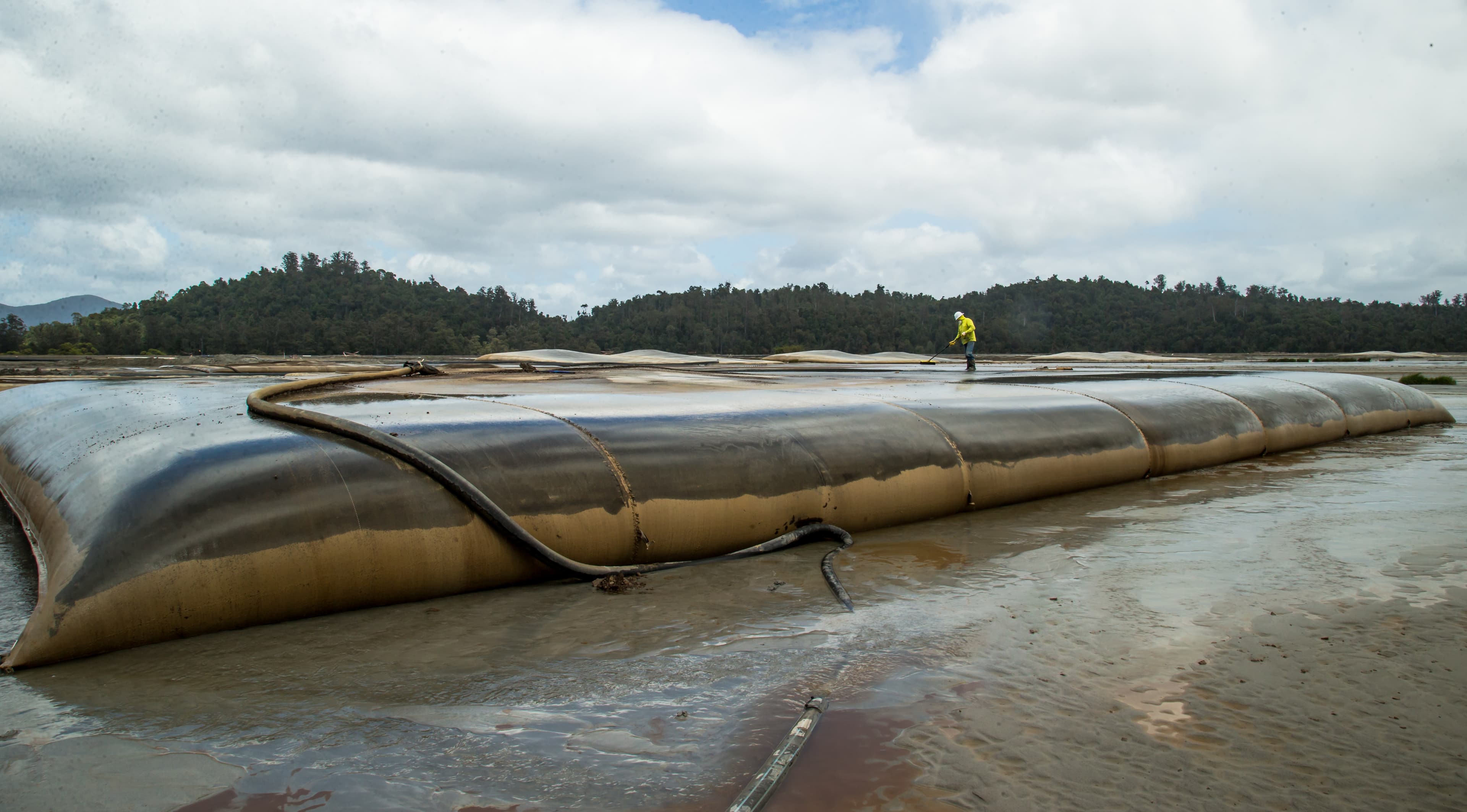Overview
The MMG Rosebery mine in Tasmania has been a successful underground mining operation for over 80 years, producing gold, zinc, copper, and lead concentrates. However, managing wastewater has been a challenge due to strict environmental regulations. The mine has two tailings' dams, one older and near capacity, and a newer, smaller one.
Challenge
To comply with regulations, wastewater runoff cannot be discharged into the environment. Instead, it must be recycled and discharged into the older tailings dam along with contaminated water from underground workings. The runoff is collected in polishing ponds for settling before final discharge.
Solution
To address these challenges, several solutions were implemented:
1. Dewatering and cleaning the polishing ponds: The ponds were dewatered by establishing a dewatering pad and polymer dosing unit near a freshwater source 600 m (1968 ft) away from the furthest pond. GEOTUBE® GT500D units with a circumference of 36.6 m (120 ft) and length of 30.6 m (100 ft) units were installed to capture sediment. Slurry from the ponds was mixed with polymer and pumped into the GEOTUBE units for dewatering.
2. Water management tubes: GEOTUBE units were used to filter recycled tailings and underground wastewater. Due to limited space, the units were installed on the older tailings dam. However, complications arose due to a dam wall raising project, requiring the units to be placed at least 100 m (328 ft) away from the wall. The tailings varied in stiffness, posing challenges.
Initially, six GEOTUBE units were deployed in groups of two. Water with low solids content (0.5%) was pumped through the tubes at a rate of 600 L/sec (158.5 gal/sec) without polymer dosing. Water discharge from the tubes was rapid and clear. However, it was observed that the high volume of water softened the tailings beneath the inner side of the tubes more than the outer side, leading to uneven settlement and the failure of one tube seam.
Further examination revealed settlement differences between the inner and outer sides of the tube. Settlement was lacking at the outer end, while the inner side experienced settlement of 750 mm to 1 m (29.5-39.4 in). Despite the failure, the intact portion of the tube showed effective dewatering and firm solids.
As the project progressed, additional GEOTUBE units were laid further away from the firm tailings against the wall, where the conditions were increasingly soft. MIRAFI® Bidim nonwoven geotextile was used to improve access over the soft tailings. The tube units were laid over geomembrane, directing water discharge away from the tubes and into the dam.
In total, 38 large GEOTUBE units with a sediment capture volume of 1,000 m³ (1,307 yd³) each were deployed. Thirty-two tubes were installed over very soft and difficult-to-access tailings.
The project provided valuable knowledge on successfully installing and operating large tubes over extremely soft substrates. It demonstrated the effectiveness of GEOTUBE units as a high-volume water management tool, capturing and containing sediments within the tailing's storage facility.
Key insights from the project include:
Directing water discharge away from the tube footprint prevents further softening of the tailings below.
GEOTUBE settlement depends on the strength of the substrate. Uniform filling and even stress on the tube fabric minimize the risk of failure when deployed over soft substrates.
Experienced applicators familiar with GEOTUBE performance and safety limits should handle installation and operation in challenging conditions.
GEOTUBE dewatering units to function as high-volume water processing containers, effectively capturing fine particles in suspension.



